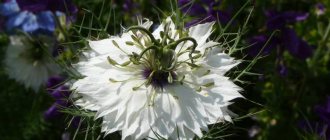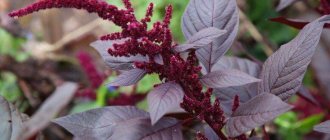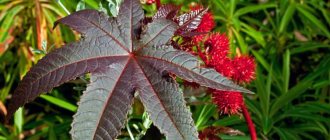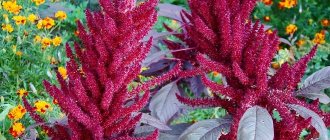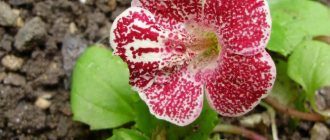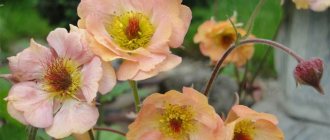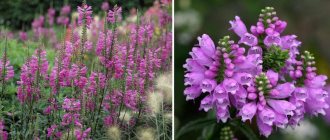Amaranth, also called foxtail amaranth, is an extremely ornamental and easy to grow plant. Thanks to the intense coloring of the flowers, the species looks great in flower beds, garden beds, in pots, and is suitable for bouquets, and the seeds are used in cooking and are a healthy substitute for cereals. Find out how to grow amaranth, about planting and care in open ground, look at photos and get acquainted with popular species and varieties of this plant recommended for growing in gardens.
Brief information about the plant
Amaranth is an annual plant that belongs to the Amaranth family. The plant blooms from June to September. The inflorescences are collected in spike-shaped panicles, which can be red, golden, purple or green. The amaranth bush has a thick stem and elongated leaves, which are colored green or burgundy depending on the variety.
Amaranth can be of decorative, grain, vegetable and fodder type. However, most often, ornamental species are grown to decorate the site and vegetable plants that are suitable for consumption.
For summer residents, the plant is better known under the following names: amaranth, velvet, cockscomb, cat's tail.
The plant is distinguished not only by its decorative characteristics, but also by its beneficial qualities. Amaranth is used for medical purposes and helps to cope with diseases such as:
- Obesity.
- Kidney diseases.
- Diseases of blood vessels and heart.
- Increasing immunity after infectious diseases.
- Skin diseases accompanied by an inflammatory process.
Amaranth contains a lot of protein, so it is often used as animal feed.
Pests
The main enemy of amaranth is aphids. defeat your enemy.
As you can see, caudate amaranth is a plant that pleases the gardener in the flowerbed in summer, and in dried bouquets in winter. The unfading flower does not require complex care and captivates at first sight.
You can also learn more about the care and planting of tricolor amaranth.
And for those who like to know more, we suggest you watch the video about caudate amaranth
The most common varieties
| Variety | Appearance | Peculiarities |
| Valentina | The height of the bush is 110 cm. The stem is strong with a large number of side shoots. During the flowering period, it is covered with burgundy inflorescences, which are collected in ears. The leaves are burgundy and elongated. | Suitable for human consumption. |
| Prefect | Plant height 80 cm. Spreading bush with variegated leaves up to 20 cm long. | Young leaves are yellow. During the growth period, green and burgundy blotches appear on the leaves. |
| Sturdy | The height of the bush is up to 1.4 meters. The leaves are green and juicy. The inflorescences are collected in a dense panicle of rich green color with brown splashes. | The growing season is 80 days. Can be used for food. |
| Green Thumb | The height of the bush is 50 cm. The shoots are strong, the leaves are elongated green. The inflorescences are colored emerald. | During seed ripening, the inflorescences turn brown. |
When to plant seeds for seedlings
In order for the seedlings to have time to grow and get stronger before planting in open ground, the recommended planting dates are observed.
It takes 2-2.5 months to grow strong amaranth seedlings.
Many summer residents use hints from the Lunar calendar.
When planting, the region of residence is also taken into account, since weather conditions differ significantly.
- For southern regions , where the air temperature warms up faster, seeds for seedlings can be planted in mid-February.
- In the middle zone, seeds are sown in early March.
- In Siberia and the Urals, planting begins no earlier than the end of March, since overgrown seedlings are poorly accepted and remain weak for a long period.
Literature
- Brovkina T.Ya and others, “Annual flower crops in open ground”, “Kuban State Agrarian University”, 2008.
- Magomedov I.M., Chirkova T.V., “Amaranth - past, present and future”, “Advances of modern natural science”, 2015.
- Kolesnikova E.G. “Annual flowers”, Moscow, “SME Publishing House”, 2003.
About the medicinal properties of amaranth
- . Bliznetsova G.N., Korenskaya I.M., Polyakovasemenova N.D., Retsky M.I.” “The role of free radical oxidation processes in the mechanism of hepatoprotective action of amaranth seed oil”, “Biomedicine”, 2006
- Shevchenko I. A., Magomedov I. M., Vershinin A. Prospects for the use of functional foods for the prevention and complex treatment of cardiovascular diseases, “Modern science-intensive technologies”, 2004.
Preparing for sowing
Preparatory work allows you to obtain uniform seedlings and grow strong seedlings.
Seed selection
You need to buy amaranth seeds in specialized stores. Otherwise, you may encounter a fake and purchase wild species that have low decorative qualities or are not used for food.
When choosing seeds, consider the following features:
- Amaranth seeds with green leaves have a beige or cinnamon hue. The surface of the seeds is smooth and shiny;
- amaranth with red leaves has small black seeds.
Seeds collected from the site should not show signs of damage or mold.
Preparing seeds for sowing
Amaranth seeds are very small and have a good germination rate of about 90%, so no preparation is carried out before sowing.
Soil selection and preparation
The plant prefers loose soil. To grow seedlings, you can purchase a commercial substrate intended for violets.
If desired, you can prepare the soil mixture yourself. To do this, mix:
- 1 part turf;
- 2 parts peat;
- 1 part humus;
- 1 part coarse river sand.
The resulting composition is thoroughly mixed and fried in an oven to eliminate fungus and pest larvae. The duration of heat treatment is 20 minutes at a temperature of 70-90°C.
Choosing a container for seedlings
To plant seeds, use a container 10 cm high. The bottom of the container should have drainage holes to remove excess water. You can use plastic cups, pots, boxes, or food packaging as containers.
Before use, the container is treated with a solution of potassium permanganate. Mix 2 grams of substance in 1 liter of water. This treatment is necessary to disinfect containers.
Sowing work
When planting amaranth seeds, follow the following algorithm:
- A drainage layer of expanded clay or perlite 2 cm thick is placed at the bottom of the planting container. This is necessary to prevent stagnation of water and prevent rotting of the root system.
- Fill the containers with soil, departing 2 cm from the top edge.
- The seeds are scattered in a thin layer over the surface of the soil and pressed to the ground. Surface sowing means that there is no need to cover the planting material with soil.
- Spray with water from a spray bottle and cover with glass or film.
Every day the cover is removed and the soil is ventilated, otherwise the seeds may rot. Ventilation duration is 15-30 minutes. Condensation from film or glass is wiped off. If the top layer of soil has dried out, it is moistened with warm, settled water.
How long will it take for the shoots to appear?
Shoots appear 4-6 days after planting. After the first shoots appear, the covering material is removed, otherwise burns may appear on the delicate leaves.
Since the seeds were sowed superficially, the root system of amaranth sprouts will be above the soil. To cover the bare roots of the plant, they are carefully covered with earth using a sieve.
Conditions for growing seedlings at home
By following simple care recommendations, even a novice gardener can grow amaranth seedlings.
Temperature and lighting
For rapid seedling growth, a temperature of +20-22°C is required. Indicators below +20°C lead to the plant growing poorly and becoming weak.
Seedlings should be placed on a well-lit windowsill, preferably on the south side. If there is not enough light, use phytolamps for additional illumination. Additional lighting is also used in cloudy weather.
Watering
Water the seedlings as the top layer of soil dries. Watering is done at the root so that drops do not fall on the ground part of the seedlings.
Picking
Picking is carried out so that the roots of the plant develop well. After this procedure, the seedlings quickly gain strength and are ready for further replanting in open ground. Picking is carried out only when the plant has 2-3 true leaves.
- The container with seedlings is watered generously with warm water and left for 2-3 hours.
- New individual containers are filled with the soil that was used when planting the seeds. You can choose peat cups, so during the process of transplanting into open ground, the planting container will not need to be cut; the seedlings are planted together with the container.
- Using a wooden spatula, separate one plant at a time along with the soil and transplant it into a new container.
- After picking, the seedlings are watered with warm water and the container is placed on the windowsill.
After the soil in the cups has settled a little, add a little more soil on top and compact it.
Top dressing
1.5-2 weeks after picking, the seedlings can be fed with wood ash. This type of fertilizer saturates the soil with nitrogen and reduces the risk of blackleg disease. The ash is sprayed through a sieve onto the soil in a layer of about 0.5 cm and watered with warm water.
Hardening
Hardening begins 2-3 weeks before planting in the ground. On the first day, open the window slightly to ventilate the room with the seedlings for 20-30 minutes. Every day the duration of hardening is increased by 30-60 minutes. The procedure is necessary so that the plant, after transplanting into open ground, quickly adapts to changing conditions.
Video: how to sow amaranth seeds correctly.
Choosing a planting site, soil requirements
Amaranths are heat-loving plants; the place for them should be secluded, sunny, protected from strong winds. Plants have a lot of green mass and not very strong roots to support it. In the shade, varieties with colored leaves do not color as well as they should, and the wind easily knocks over tall specimens.
Most species are undemanding to soils. The soil for amaranth is preferable:
- light;
- permeable;
- not too wet and not dry;
- The recommended soil pH is 6.0-6.5.
The plant will grow well even on soils poor in nutrients, but it is better to sow it on humus soils with a high calcium content.
Only tricolor amaranth has higher requirements and needs fertile and humus-rich soil for optimal growth.
Planting seedlings in open ground
Amaranth seedlings should be replanted after the air warms up to +15°C. Plant the plant in the morning or in cloudy weather. For planting, choose an open sunny area, protected from drafts.
Amaranth, which is grown in sunny areas, is distinguished by its bright leaves and abundant flowering.
The distance between plants should be at least 30 cm. The crop has a highly developed root system, so if there is not enough space, the bushes will oppress each other. Amaranth goes well with any other plants. For decorative purposes, it is often used to decorate flower beds and garden paths.
After transplanting into open ground, seedlings may stop growing for 10-15 days. This is due to changing conditions. However, gradually the growth will become intense and the plant will quickly gain green mass.
Amaranth – photo
In our latitudes, amaranth is just gaining mass popularity, so, most likely, you have not seen it very often. In this case, be sure to take a look at our photo selection!
Photo: ecomne.ru
Photo: numerologyalexk.com
Photo: zen.yandex.ru
Photo: chudogryadka.mirtesen.ru
Photo: blog.leto-shop.ru
Photo: 2sotki.ru
Photo: serviceyards.com
Photo: artfile.ru
Photo: greeninhouse.ru
Photo: stiralkovich.ru
Photo: 2sotki.ru
Photo: gwallsbest.com
Photo: erpstat.ru
Photo: healthy-inform.ru
Photo: 2sotki.ru
Photo: plantorama.ru
Photo: dachadecor.ru
Photo: flo.discus-club.ru
Photo: na-dache.pro
Photo: 2sotki.ru
Photo: fi.pinterest.com
Photo: bober-medcentr.ru
Photo: sovocrim.ru
Photo: evgenyart.livejournal.com
Photo: amaranth-health.com
Did you like the post? Subscribe to our channel in Yandex.Zen, it really helps us in our development!
Caring for seedlings in open ground
After transplanting seedlings into open ground, it is important to follow proper care, which consists of the following recommendations:
- Seedlings tolerate drought well, but for rapid growth you need to regularly moisten the soil. Water the plant every 2 days after sunset. During the hot period, watering is carried out every day.
- 2 weeks after planting in open ground, the seedlings are fed. Complex mineral fertilizers, for example, Kemira Lux, are used as fertilizing. Mullein infusion is also used. To prepare, dissolve 1 kg of the substance in 2 liters of water and leave for fermentation for a day. The resulting composition is diluted in 5 liters of warm water and watered over the seedlings.
- Weeds are removed in a timely manner and the soil is loosened so that the plant receives a sufficient amount of oxygen. Often, to protect amaranth seedlings from weeds and maintain soil moisture, the area is mulched. To do this, use sawdust mixed with humus or sphagnum moss. The mulch thickness is at least 2-3 cm.
To get a lush bush, the tops of the plants are pinched. The procedure is carried out after the bush reaches a height of 20 cm.
The longest and most elongated shoots are pinched, thus forming attractive lush bushes.
How to use, useful properties
The use of amaranth and its beneficial properties have long been studied. At first, it was grown strictly as an ornamental plant, then, after assessing the significant benefits to the body, it began to be used in the form of livestock feed and for the production of cereals. Amaranth cereal is very healthy, but has a specific taste. Preparing it is quite simple, like any standard porridge: pour boiling water and cook for 15-20 minutes.
Croton - home care and how to water this plant
The plant uniquely combines nutrients, minerals and vitamins:
- Vitamins – A, C, B1, B2, B5, B6, B9, PP, K.
- Iron, zinc, selenium, manganese, copper are trace elements.
- Calcium, phosphorus, potassium, magnesium, calcium, sodium are macroelements.
- Amaranthine is an antioxidant.
- Protein.
- Pectin.
- Squalene – prevents the development of cancer.
- Alimentary fiber.
- Omega 3 and 6 fatty acids.
Important! Amaranth seeds (otherwise known as “shiritsa”) contain 30% more protein than rolled oats and rice. It is 2 times healthier than wheat and soy. In addition, a natural dye can be obtained from the leaves, which is used for food purposes without harm.
Healing properties of amaranth herbs and leaves:
- Reduces cholesterol
- Treat calcium deficiency
- Normalize metabolism
- Stimulates brain function
- Treat bleeding gums
- Analgesic and anti-inflammatory,
- Protects against fungal diseases, etc.
Collecting seeds from the site
Amaranth seeds are collected only after the inflorescences have fully ripened. The most optimal period is considered to be from late August to mid-September. The collection process is carried out as follows:
- after the panicles have finished flowering, they are carefully cut off and placed on the windowsill for 2 months until fully ripened;
- The ears are kneaded so that the seeds fall out.
- then the grains are sifted through a fine sieve and placed in a dark, dry place.
Reproduction methods
All types of amaranth reproduce from seeds. Seed collection begins in the fall, when the lower leaves fall off and the panicle begins to dry out slightly. It is important not to miss the moment, as the seeds quickly fall to the soil. It is better to cut off the unripe panicle and place it in a ventilated room for ripening.
After a few days, rub the inflorescences with your hands over a white cloth or paper, and then pour the seeds into a small storage container. Amaranth is beautiful, unpretentious, huge, magnificent, useful, and these are not all the advantages.
Common mistakes when growing seedlings
When growing amaranth seedlings, summer residents make mistakes that lead to the death of the plants. The most common ones include:
- incorrectly chosen landing site. Planting the plant on a loamy type of soil leads to the fact that amaranth grows weakly and does not form buds. To correct the situation, humus is added to the soil in a proportion of 10 kg per 1 m2 and river sand 5 kg per 1 m2;
- too early planting in open ground. The plant does not tolerate night frosts well. If the seedlings have outgrown and need to be planted in the ground, then cover the bushes with film or plastic bottles at night;
- planting seeds too deep. The planting material is not deepened, otherwise the seedlings will be uneven, or the seeds will not germinate and will rot.
Another mistake when growing seedlings is sowing seeds too thickly. If the seedlings have sprouted densely, thinning is carried out, leaving the plants at a distance of 1 cm from each other. Such actions also facilitate the picking process in the future.
Amaranth is a common plant among summer residents. Caring for the crop is undemanding, so even a beginner can handle it. In order to get a lush bush, it is recommended to grow amaranth in seedlings, and only after that transplant the plants into open ground.
